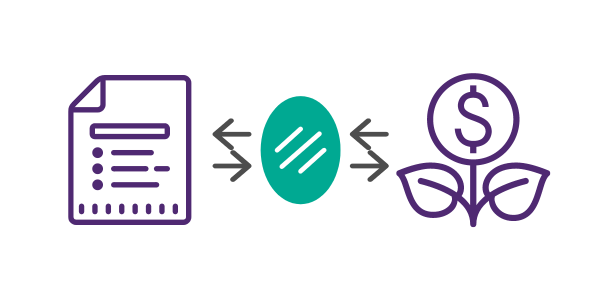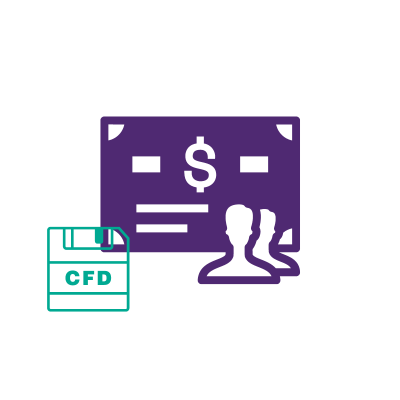Trading indices explained
When people hear about trading, they usually think about individual assets like currency pairs, stocks,
commodities, and others. They think that traders buy and sell only those securities, however, there are other types of assets that can be traded or used for informational purposes.
One such asset type is called an index. As for the indices meaning, they are a financial instrument that combines individual assets and represents their average value. Big financial companies track the prices of these assets in order to enable interested people to get a general view of the economy.
Types of index trading explained
For example, stock indices are the most popular index types in this industry because they combine some of the biggest companies in the world. And because of that, many economists, traders, and other people find them useful for getting a better view of the economic condition in the country. If the companies listed in the index are successful and growing, the index value will be increasing as well. And this will indicate that the economy is doing good.

On the other hand, if the index value is decreasing, this means that the companies are unsuccessful and the economy is in crisis. These conclusions may not always be very accurate, but for the general picture, they are still useful.
As we mentioned above, stock indices are the most popular types of index in finances. However, there are other types as well, such as indices in Forex, bond indices, etc. The most popular Forex index is USDX (also known as DXY or DX), which is a measurement of the US dollar against six other international currencies: euro, Japanese yen, Pound sterling, Canadian dollar, Swedish krona, and Swiss franc.
The most popular stock indices
Indices, commonly referred to as indexes, play a pivotal role in contemporary financial markets. Both passive investors and active traders leverage these financial instruments to capitalize on market opportunities. One of the most compelling aspects of indexes that draws investors is their inherent capacity for diversification. Rather than allocating funds to a single company, investors and traders can spread their investments across entire sectors and industries, thereby mitigating risks. Let's delve into some of the widely recognized and influential indices on a global scale:
S&P 500 Index (US)
The Standard and Poor's 500, commonly known as the S&P 500 or US 500, stands as the preeminent global index. It meticulously tracks the performance of the top 500 publicly traded companies in the United States, serving as a benchmark for assessing the nation's economic vitality. Originating in 1923 as the "Composite Index," it initially monitored a limited number of companies before evolving into the robust S&P 500 we recognize today, officially established on March 4, 1957.
An intriguing facet of this index lies in its nomenclature; despite being labeled as the S&P "500," it encompasses more than that number. As of July 2018, it monitored 505 stocks, a figure subject to periodic fluctuations. The dynamic nature of the index is underscored by stringent criteria companies must meet for inclusion. Consequently, some companies lose their coveted spots while others secure entry. Noteworthy, too, are instances where companies issue new classes of stocks, further influencing the index's composition.
For investors, the S&P 500 and similar indexes represent cost-effective investment instruments compared to actively managed funds. This notion gained prominence, in part, due to the efforts of John C. Bogle, the founder of the Vanguard Group, who played a pivotal role in popularizing the concept.
Dow Jones Industrial Average (DJIA) (US)
The Dow Jones Industrial Average (DJIA), commonly referred to as the Dow, tracks the performance of the top 30 companies listed on the US stock exchanges. Its inception in 1885 is credited to the collaborative efforts of Charles Dow, Edward Jones, and Charles Bergstresser. However, these pioneers were not solely architects of this financial barometer; in 1889, they also established the Wall Street Journal.
Remarkably, the Dow Jones index, initially comprising 12 predominantly industrial companies, was the brainchild of journalists Charles Dow and Edward Jones. Over time, it evolved and expanded to its current roster of 30 diverse companies, reflecting shifts in the economic landscape.
Much like its counterpart, the S&P 500 index, the Dow Jones Industrial Average serves as a reliable indicator of the overall health of the American economy. Rooted in its historical origins and adapted to contemporary financial dynamics, the Dow remains an influential benchmark for investors and analysts alike.
NASDAQ Composite (US)
The NASDAQ Composite (US), commonly referred to as the Nasdaq 100, stands as a widely recognized index. Contrary to its nomenclature, this index tracks the performance of more than 100 companies. Its composition is determined by market capitalization, signifying that larger companies wield a greater influence on the index's overall value. It is noteworthy that the index excludes any financial companies from its roster.
FTSE 100 Index (UK)
The Financial Times Stock Exchange 100 Index, commonly known as the FTSE 100 or affectionately nicknamed "Footsie," is a widely recognized index tracking the performance of the top 100 companies listed on the London Stock Exchange, determined by their market capitalization. Established in 1984, the FTSE 100 serves as a valuable indicator, providing insights into the health and vitality of the UK's economy.
Nikkei 225 (Japan)
The Nikkei 225, commonly known as the Nikkei, is a prominent stock market index representing the Tokyo Stock Exchange in Japan. Established on September 7, 1950, it operates as a price-weighted index, with stocks added or removed automatically based on their market capitalization. Beyond offering investors a platform to engage with the Japanese economy, the Nikkei serves as a reliable indicator, reflecting the overall health and performance of the country's economic landscape.
What are indices in real-world trading?
Traders can use indices in two ways: they can either buy the individual assets and use indices to track their price movements more accurately, or they can use those indices as CFDs and actually trade using them. Let’s talk about both of those options.
Using indices as market indicators
So, what are indices in trading? According to the first option, indices can be used as market price indicators. Because they combine lots of individual assets, the price of an index actually becomes the general indicator of how the industry is working. Here is what it means:

If the price of an index is increasing, that means the individual asset prices are also rising, and the industry is working well. This information can be used for trading the individual assets; a trader can conclude that since the index value is going up, it may be worth buying a certain asset because its price may increase even more.
On the other hand, if the index price starts declining, a trader can take a note from it, speculating that even though their asset is still stable or increasing, its price may start declining because other assets are behaving that way.
Now, all those conclusions are speculations and cannot always work the same way. Sometimes, those predictions will become the reality, but sometimes they will not. It is important to keep this in mind when using indices as price indicators.
Using indices as trading CFDs
Another option, as we’ve discussed above, is to use indices as
CFDs (contracts for difference) and trade them. Many traders use a method of buying many assets - which is called portfolio diversification - as a form of reducing risks. And since indices combine individual assets, they can be considered as diversified portfolios that contain a basket of various stocks, currencies, or other assets.

But there is a difference between what are indexes as CFDs and what are diversified portfolios: the second option requires them to own the assets, while the first one doesn’t. For example, a trader can open a long position (buy) on the FTSE 100 index without buying any assets, which basically means this: a trader speculates that the value of this index, as well as its assets, is going to increase in the future.
If the value actually increases, a trader will get a payout from this CFD trade. The amount of payout depends on the difference between the initial price, when a trader placed the long position, and the final price, when a trader placed the short position (sell). But if the FTSE 100 value goes down, a trader will have to pay the price difference.
One of the reasons why traders tend to choose indices for trading is that they offer a much larger exposure to the market. What this means is that the index traders usually open positions without conducting detailed research on the market. That’s because the general direction of the index prices can be a good indicator of how the industry is doing. Besides, the indices are less volatile because the individual assets cannot have a big influence on their value.